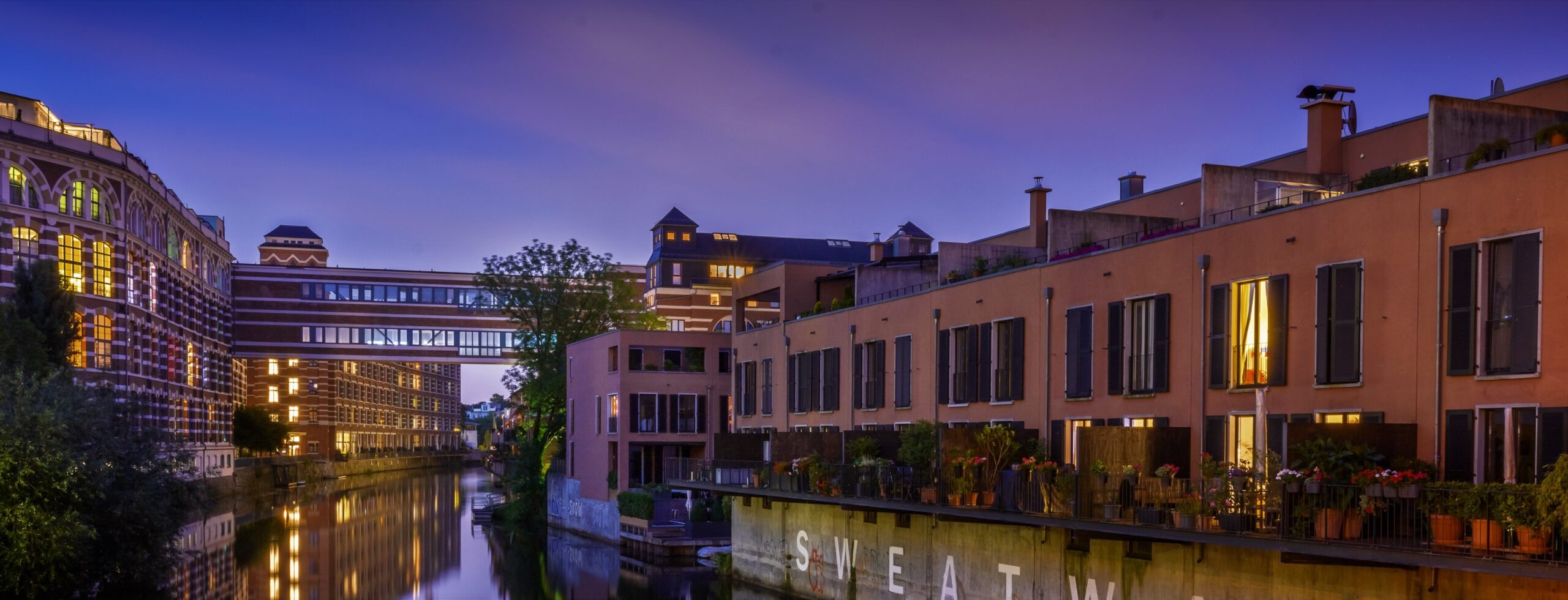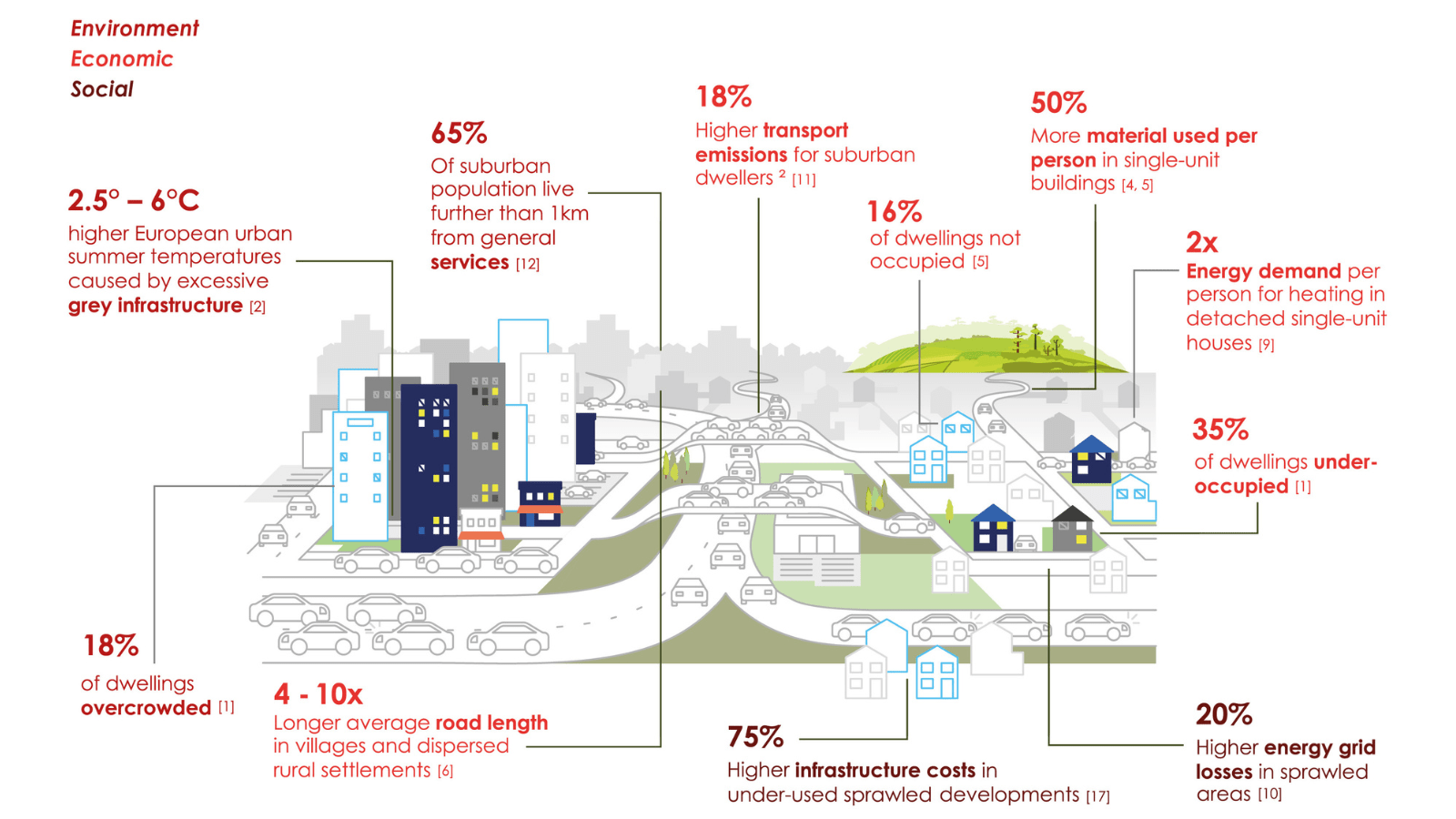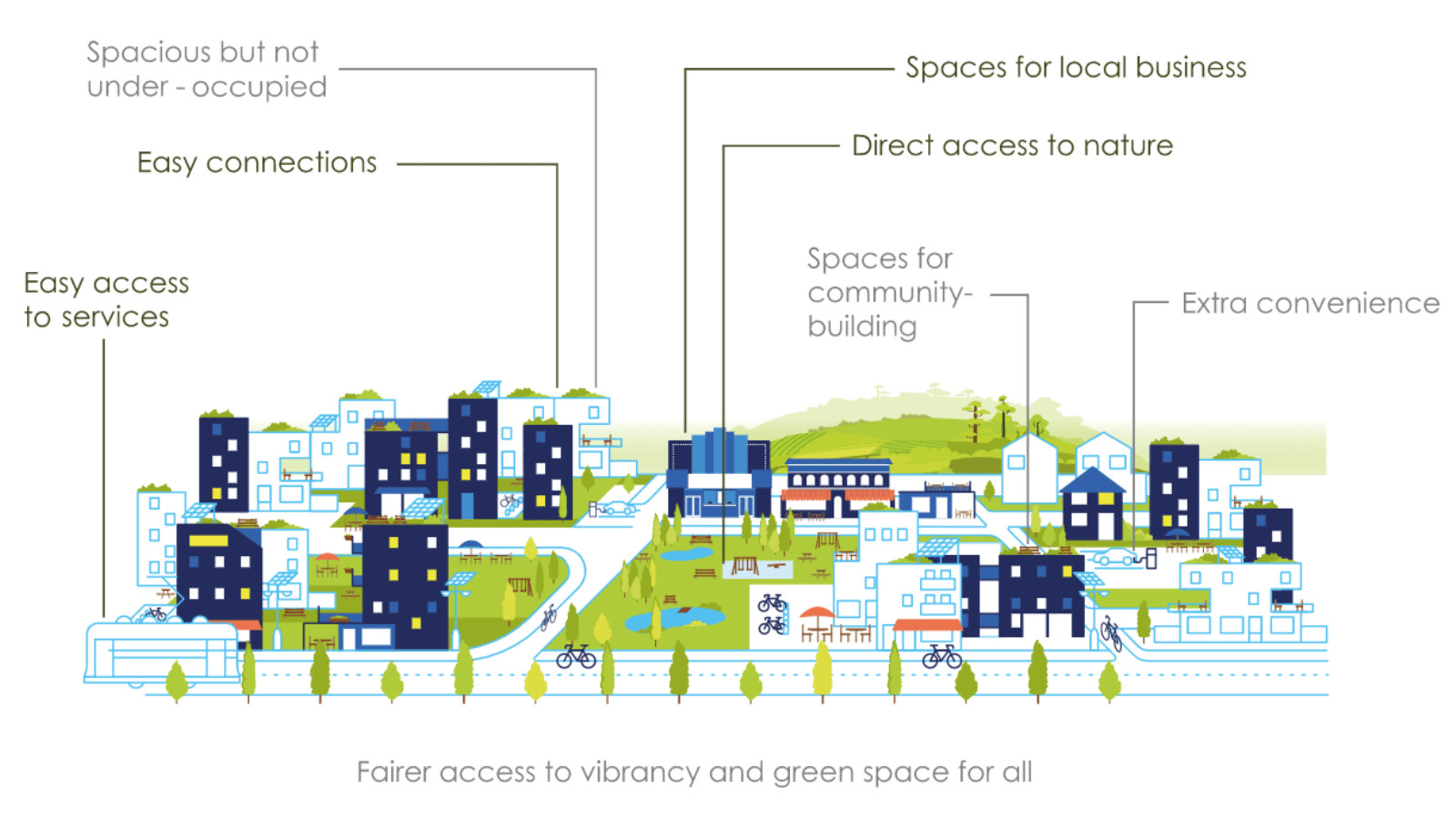Urban areas are Europe’s social and economic foundation, as spaces of social interaction and of access to services, culture and commercial activities.
But attempts to improve the built environment aren’t meeting European social or environmental goals. More balanced, efficient space use represents a massive opportunity for wellbeing, climate mitigation and adaptation, and nature.
Cities, countries – and Europe as a whole – must make high-quality urban living accessible to more people. In so doing, they can make urban areas more resource-efficient, reducing their emissions and waste, and boosting climate adaptation.
Every year, Europe builds 15 million new dwellings and spends money on roads and other infrastructure that uses hard-to-decarbonise materials – all of which end up being underused. Yet, around a quarter of Europe’s cities are shrinking fast, leaving vacancies and urban decay. Most Europeans live in low-density urban areas in a single-family home, which uses 50% more material and twice as much energy as they really need
Current efforts to improve Europe’s built environment tend to overlook a massive opportunity to tackle systemic waste and emissions while improving urban life in vibrant neighbourhoods. Policymakers, planners and investors need to prioritise better space use.
Efficiency – often referred to as compactness or density – must be combined with balance, meaning the provision of green spaces, and of diverse spaces for community interactions, local businesses and culture, as well as low-carbon transport links.
Explore this in more depth in our new white paper, “Efficient and balanced space use – shaping vibrant neighbourhoods and boosting climate progress in Europe“.
Systemic excess material use and emissions, in contrast with the benefits of efficient, balanced space use
Looking for a deeper dive into the analysis behind the white paper? Click below, or contact author Julia Okatz



